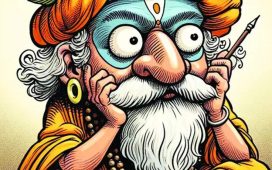The relationship grew robustly despite hurdles. There was a constant flow of visits by top officials (except VP Kamala Harris), a successful G20 summit, initiation of India-Middle East-Europe Economic Corridor (IMEC), growth of Quad, an agreement to establish a national security semiconductor fabrication plant, a joint effort to map Earth, and a mission to the International Space Station.
China is seen as the major reason for the growth in ties. But there’s another equally important propeller. Beyond strategic compulsions, it’s the people-to-people links that create abridge of ideas and influence. Look around and the presence of Indian Americans in both the outgoing Biden administration and the incoming Trump team is hard to miss.
Gaze at Capitol Hill and find the new House of Representatives has six Indian American members — the largest in history, having grown from one in 2013. Interestingly, Congressman Raja Krishnamoorthi is the topmost Democrat on a key Congressional committee on strategic competition with China that high lights Beijing’s subversive tactics in the US and beyond.
NSA Jake Sullivan’s farewell trip to New Delhi last week was to celebrate the progress: integrating key supply chains, breaking new frontiers in space, enhancing undersea domain awareness, launching a joint AI project for product to support all domain command and control, starting research projects for processing technologies for critical minerals, reducing US export control barriers, and aligning strategies around national security implications of AI. He announced that the US is taking steps to remove the last three GoI organisations, including Bhabha Atomic Research Centre (Barc), from the entities list to allow for civil nuclear cooperation. Why wait until the last day to do it is anyone’s guess. India’s nuclear tests, which triggered US sanctions and blacklisting, were way back in 1998. What about the bumps in the relationship? Looking at iCET where much is happening, but only up to a point after which fears about India’s friendship with Russia take over and hesitation surfaces. Despite Indian assurances that integrity of tech won’t be compromised or shared, US officials remain sceptical. They want harmonisation of Indian export control laws with theirs.
The underlying expectation: India should align more with the US political agenda. Green lights such as Strategic Trade Authorisation-1 (STA-1) status that India has don’t help. The ‘stop-start, stop-start’ process reminds New Delhi of the two predecessor agreements — High Technology Cooperation Group (2002), and Defence Technology and Trade Initiative (2012), which didn’t make much headway but did start the conversation. It makes iCET the third bite at the apple, as an analyst put it.
The two US indictments against Gautam Adani and others have injected a certain amount of bitterness in the conversation. Going public didn’t play well in New Delhi. Whatever the nature of the evidence, it was a choice to go after Adani. That the US legal system is sacrosanct is not cutting it when cases against Trump are falling by the wayside. How the Biden team frames the two indictments for Trump officials would determine future developments.
The White House meeting with Sikh activists was another major irritant. Although India didn’t officially raise it, the US side explained it as a coincidence. It begs the question: where were US officials going with it? ‘You’re not dealing with an India of the ’80s and ’90s. These pinpricks won’t give you strategic advantage. It irritates everyone and takes a lot of effort to repair,’ an insider told me.
From Bangladesh to Myanmar to Pakistan, India sees developments differently. Forces unleashed and now at play in Bangladesh have upset Indian equities, to say nothing of the pernicious narratives being promoted that Indian policies were helping only Awami League (AL) supporters. Meaning only AL homes were lit with Indian power lines. American silence on the lack of democracy has angered Delhi.
Myanmar is a replay of old times, and the US wants to sanction ‘the hell out of them’, a policy that didn’t work in the past and gave China the upper hand. Why not help them find a way out of the current political churn? As for Pakistan, the less said the better.











